|
Building A Speaker
Cabinet For My Octal Fatness
Last Updated 11/13/05
By Paul J. Marossy
After I built
my Octal Fatness amp, I decided that it needed a speaker cabinet that was its very own.
I thought that a closed back 1x12 speaker cab would probably sound best with this amp.
So, I decided to build a speaker cabinet for it. Building this speaker cabinet
had much in common with the speaker cab that I built
for my Firefly. Below is some pictures of
this speaker cab project.
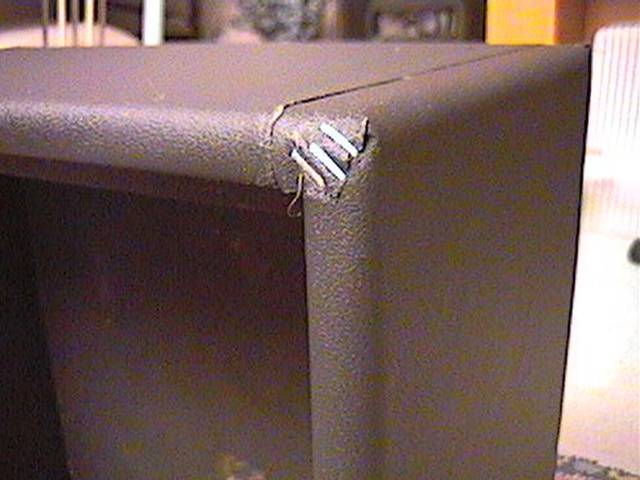 |
I didn't take any pictures
of it during construction, but the cabinet is built from 5/8" particle
board. I rounded the edges by hand with a rasp and smoothed it up with
a fine wood file. It was a kind of a pain in the neck doing it this way, but I don't
own a router or have easy access to one. It turned out pretty
well, all things considered.
|
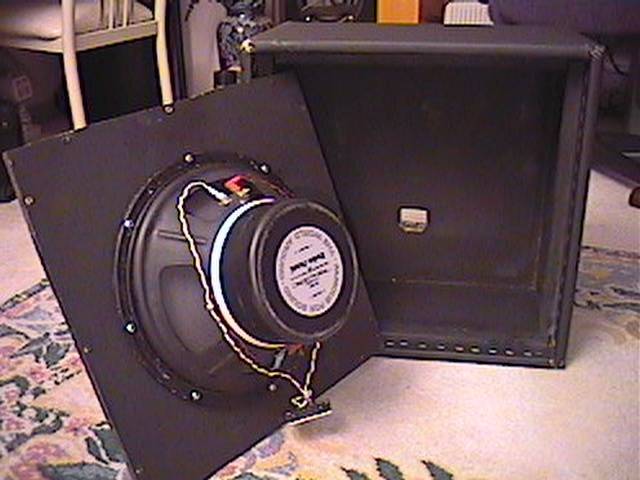 |
Here is the rear of the speaker baffle. The baffle is made out of 1/2"
plywood. The speaker is a 4 ohm dual voice coil that was given to me and was made for RadioShack and is
capable of handling 60 watts per voice coil. I used this speaker for a variety of reasons.
For one, I had it lying around, and with a dual voice coil, it makes it very convenient
to wire it
for either 4 or 8 ohms using a DPDT switch. Second, I rather like the sound of a speaker that
wasn't designed specifically for guitar. They sound smoother to my ear.
|
 |
Here is a view of the front of the cabinet, minus the speaker grille
which has yet to be manufactured. The overall cabinet dimensions are as follows:
18.25" wide, 18.25" high and 10" deep. I didn't do any calculations of Qtc and all that stuff
since even though I do have the full specs on the speaker I used. Instead,
I used an intuitive approach for the cabinet size. It worked out pretty
well, all things considered.
|
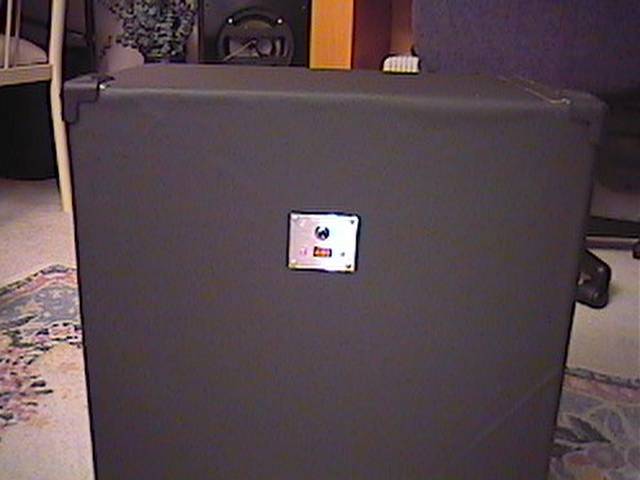 |
The covering I used matches the covering on my Octal Fatness. I had just enough
material left over to cover this cabinet. The speaker jack plate comes from the
one of the cut outs for the transformer on my Matchless Spitfire clone. The impedance switch is a
recycled DPDT voltage selector switch from a computer power supply. I used
the same grille cloth as I did on my Firefly's speaker cab. The plastic amp corners and handle
were purchased online from www.PartsExpress.com
|
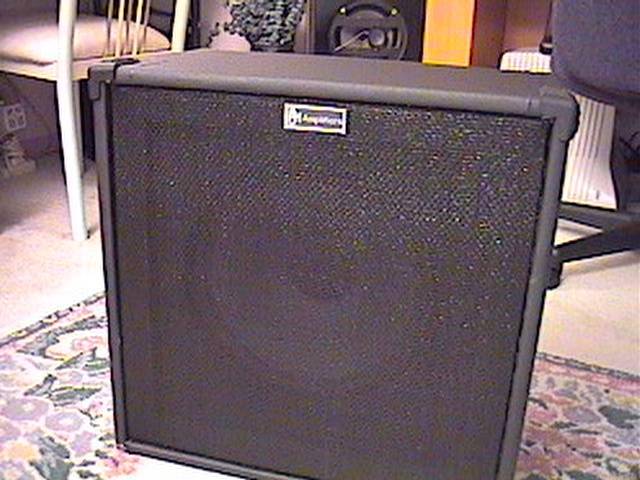 |
Here is the finished cabinet. All in all, it didn't turn out too bad. It looks
and sounds good and the cost was very minimal, about $25, not counting the parts I already had lying around to use. Overall weight of this cab is about 20 lbs. |
 |
About 18 months after I made this speaker cab, I built one identical to it for use with
my stereo guitar rig and replaced the speaker in this cab with a Celestion G12S-50 speaker from an
old ADA 2x12 quarter stack speaker cabinet. Since the resonant frequency of the Celestion
speaker is around 88Hz, I decided to port the cab for a little deeper bass response. This
picture shows the two triangular
openings that I created in the speaker baffle. The openings were cut using a jigsaw. It was
a little difficult to get the fit perfect, but overall, it turned out pretty well. |
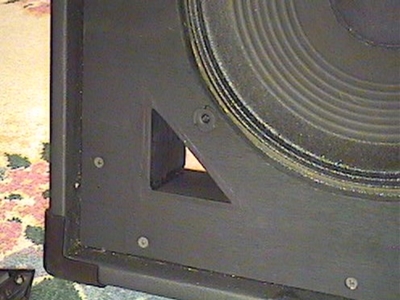 |
Here is a closer view of the port. The port is constructed of three pieces of 1/4" plywood.
The joining edges of each piece were beveled with my chop saw so that they could be fit and glued together well to
minimize air leakage and so that they would look good. The shape and placement of the ports
are mainly because I wanted to keep the speaker baffles and modify them to work with I already
had rather than building a new baffle for both cabinets. I think they look cool, too. Where the
plywood edges meet the face of the baffle, I used wood filler to create a smooth transition
between the two. It also helps it not to look bad!
|
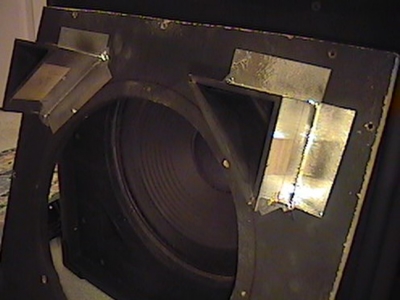 |
The two ports have a combined cross sectional area equivalent to a 4" round port, and they
are 3" deep. They are glued together and to the speaker baffle with some TightBond wood glue.
The metal tape is to help seal up the edges as well as to keep the ports in place while the
glue fully cured. I'm happy with the results as it really helped the low end quite a lot. The
cabinets are now both tuned to approximately 55Hz and sound excellent. It took about five
hours to modify both speaker cabinets. |
My Octal Fatness Page
|







